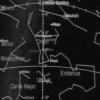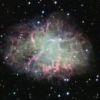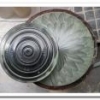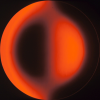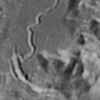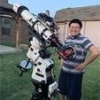grinding two equal size disks made of hard material such as glass is different than polishing one of those disks on an equal size lap made of flowing pitch.
The two glass disks grind only where they touch (except thin layer of abrasive) and become spherical or flat because those are the only shapes that will stay in contact throughout the length of stroke and all rotational orientations (assuming the glass is rotated during the work).
Polishing is different because the pitch is pliable and can flow to a different shape, allowing areas of of the lap to become more or less effective during during the work session. With a 1/3 COC stroke the central 2/3 of the mirror is always in contact with the lap throughout the entire stroke, while the outer 2/3 of the mirror is sometimes not in contact with the lap and so gets less wear, and the result is an oblate spheroid, degree depending mostly on pitch hardness.
My pet theories and ideas are along these ideas. The action of polishing has to do NOT with contact between the glass and the pitch, but with the fluid medium, pH, the pressure and speed of the layer of slurry because it is very much a chemical process of dissolving.
When the surfaces are sliding past one another there is no contact between the glass and the pitch, rather, there's a layer of turbulent flow that is creating the action. I think that the pushing motion of MOT or TOT creates a difference in the thickness of this layer...since we're measuring surface changes in millionths, and the particle size is generally several microns, there's wedge in the layer. Push too hard and you'll feel not drag, but a contact and local scrub of pitch on glass. Oops.
How thick is the layer of slurry anyway?
Also, the increase and changes in turbulence and wedge as I reverse the movement at the end of the stroke increases the action at the edge of the lap. I think this is why a short rapid stroke MOT creates an area of higher action just inside the edge of the mirror and relatively turns the edge up....wherever the edge of the lap stops and reverses, there's greater wear there.
If this is true, then that suggests why a 1/3 stroke will go oblate...the 70% zone is just where the edge of the lap stops, reverses, and deepens the curve there.
The distortion of the lap after a period of stroking is another factor that I ponder while working with small laps and accented pressure on the lap edge. Frequent pressing will eliminate that, but if I press a small lap....or any lap in the center of a deep paraboloid, then use it on the outer edge...what happens to that very thin layer of slurry? The lap no longer fits the flatter curve of the outer zones......
Edited by ccaissie, 05 December 2020 - 06:32 AM.





